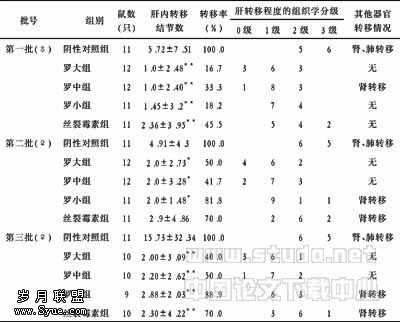263例中老年慢性肾病患者血压昼夜节律与蛋白尿、肾功能损害关系的分析
作者:俞荣强,沈开跃,郑宇琳
【摘要】 目的 观察中老年慢性肾病(CKD)患者24h血压动态变化情况,探讨昼夜节律异常与蛋白尿、肾功能损害的关系。方法 随机选择本院内科住院及肾脏科门诊中老年CKD患者263例。全部患者均监测24h动态血压,动态血压监测(ABPM)采用携带式动态血压检测仪。根据患者24h血压动态变化情况分为血压昼夜节律正常组48例;血压昼夜节律消失组215例,其中夜间血压大于白天组93例。分组讨论各组尿微量白蛋白尿、24h尿蛋白定量及肾功能情况。结果 血压昼夜节律消失组,特别是夜间血压大于白天组的尿微量白蛋白、24h尿蛋白定量明显高于血压昼夜节律正常组,且其肾功能受损情况严重。结论 在中老年慢性肾病患者中普遍存在血压昼夜节律消失情况;血压昼夜节律的消失明显与慢性肾病患者的尿微量白蛋白、24h尿蛋白定量、肾脏受损程度相关。
【关键词】 慢性肾病;动态血压监测;昼夜节律;蛋白尿;肾功能
【Abstract】 Objective To observe the change of 24-hour blood pressure and explore the relation between abnormality of circadian blood pressure rhythm, albuminuria and renal injury in middle and old aged patients with chronic kidney disease. Methods Circadian blood pressure rhythm was studied by ambulatory 24-hour monitoring in 263 patients with chronic kidney disease. Ambulatory blood pressure monitoring (ABPM) was performed with a portable oscillometric recorder. According to 24h blood pressure in patients with dynamic changes in circadian rhythm of blood pressure was divided into 48 cases of normal group. Circadian rhythm of blood pressure group of 215 cases of disappeared, in which 93 cases of blood pressure at nighttime higher than during daytime. Microalbuminuria, 24h urinary protein and renal function were discussed in each group.Results The results of blood pressure circadian rhythm in the disappearance of group, especially serious at the group of blood pressure at nighttime higher than during daytime, the CKD patients with microalbuminuria, a 24-hour urinary protein was significantly higher than the normal circadian rhythm of blood pressure group, and it was seriously impaired renal function. Conclusion In middle and old aged patients with chronic kidney disease are prevalent in the disappearance of the situation of circadian rhythm of blood pressure. The disappearance of circadian rhythm of blood pressure significantly in patients with chronic kidney disease and urinary albumin, 24-hour urinary protein and the degree of kidney damage related.
【Key words】 chronic kidney disease; ambulatory blood pressure; monitoring circadian rhythm; albuminuria; renal function
动态血压监测(ABPM)近年来逐渐用于临床,它在反映人体真实血压水平、昼夜变化、与靶器官损害程度相关性以及评价抗高血压药物降压疗效方面均优于传统的偶测血压[1]。本研究通过观察中老年慢性肾病患者的24h动态血压监测,了解其血压昼夜变化规律,并进一步分析血压昼夜变化规律与蛋白尿、肾功能损害关系。
1 资料与方法
1.1 一般资料
1.1.1 病例选择 随机选择2006年9月—2009年3月我院内科住院及肾脏科门诊中老年慢性肾病患者263例,其中男114例,女149例;年龄42~95岁,平均73.58±8.94岁。全部病人均符合K/DOQI指南的CKD定义:(1) 肾脏损伤(肾脏结构或功能异常)≥3个月,可以有或无GFR下降,病检查异常;或血、尿成分异常或影像学检查异常;(2)GFR<60ml/(min·1.73m2)≥3个月,不管有或无肾脏损伤证据。其中高血压、良性肾动脉硬化患者187例;慢性肾炎患者26例;糖尿病肾病患者23例;各种原因慢性心衰导致的慢性肾病患者20例;肾脏手术后独肾2例;肥胖相关性肾小球病患者1例;ANCA相关性小血管炎肾损害患者1例;痛风性肾病患者1例;多发性骨髓瘤患者1例;慢性肾盂肾炎患者1例。
1.1.2 病例分组 根据24h动态血压检测结果将263例慢性肾病患者分为血压昼夜节律正常组48例;血压昼夜节律消失组215例;夜间血压高于白昼组93例。
1.2 方法
1.2.1 GFR的评估 使用Cockcroft-Gault和MDRD公式。C-G公式:Ccr(ml/min)=[(140-年龄)×体重×(0.85女性)]/(72×Scr)。MDRD公式:GFR[ml/(min·1.73m2)]=186×(Scr)-1.154×(年龄)-0.203×(0.742女性)。
1.2.2 动态血压检测 采用美国Spacelabs medical 90217-1B型袖带式血压计跟踪测量24h动态血压,每30min测量1次,早上6:00至晚上22:00计为白昼,22:00至次日6:00计为夜间。
1.2.3 动态血压的正常值推荐以下国内标准 24h平均值<130/80mmHg,白昼平均值<135/85mmHg,夜间平均值<125/75mmHg,正常情况下,夜间血压均值比白昼血压值低10%~15%。夜间血压均值比白昼血压值低小于10%,称为血压昼夜节律消失;夜间血压均值比白昼血压值高,称为夜间血压高于白昼。
1.3 统计学处理 所有数据均以均数±标准差(x±s)表示,采用t检验。P<0.05,有统计学意义;P<0.01,有显著统计学意义;P<0.001,有非常显著统计学意义。
2 结果
2.1 入选患者的基本情况
2.1.1 263例中老年慢性肾病患者年龄情况 见表1。表1 263例中老年慢性肾病患者年龄情况
2.1.2 263例中老年慢性肾病患者分期情况 见表2。表2 263例中老年慢性肾病患者分期情况
2.1.3 263例中老年慢性肾病患者24h蛋白尿定量情况 见表3。表3 263例中老年慢性肾病患者24h蛋白尿定量情况
2.1.4 263例中老年慢性肾病患者根据24h动态血压检测结果分组情况 见表4。表4 263例中老年慢性肾病患者根据24h动态血压检测结果分组情况
2.2 各组慢性肾病患者数据与全部慢性肾病患者各项数据的比较 见表5。表5 各组慢性肾病患者数据与全部慢性肾病患者各项数据比较注:*P<0.05;**P<0.01;***P<0.001
2.3 血压昼夜节律消失组、夜间血压大于白昼组与血压昼夜节律正常患者各项数据的比较 见表6。表6 血压昼夜节律消失组、夜间血压大于白昼组与血压昼夜节律正常组患者各项数据的比较注:*P<0.05;**P<0.01;***P<0.001
3 讨论
正常人24h血压波动一般呈双峰一谷的长柄勺状[2],即血压从清晨6时左右觉醒后开始上升,约8~9时达白昼高峰,以后渐趋下降至平稳状态,12~14时降至白昼最低点;至17~18时出低谷现白昼第2个高峰,夜间0~2时左右为最低点,出现一个夜间,以后血压渐趋平稳[3,4]。血压昼夜节律变化对适应机体的活动,保护心、脑、肾血管的正常结构与功能具有重要作用。血压昼夜波动主要受体力与脑力活动、睡眠与清醒状态、神经内分泌昼夜改变和精神因素等多方面影响。研究提示夜间血压水平对脑血管损伤、左室肥厚等的影响较白昼血压水平更大[5],且夜间血压的升高与肾损害密切相关[6]。
动态血压监测不仅可准确反映即时血压值,而且可提供24h昼夜血压波动和研究血压昼夜节律变化,为临床血压异常、判断高血压程度和评估靶器官损害,指导合理降压,提供较为满意的手段和依据。本研究表明在中老年慢性肾病(CKD)患者多处于CKD第3期,蛋白尿水平多处于轻度蛋白尿,普遍存在夜间血压控制不佳的情况,提示CKD患者无论有无高血压多呈现非勺型血压模式。血压昼夜节律消失的CKD患者,特别是夜间血压大于白天的CKD患者的肾功能受损情况严重于全部CKD患者,该类患者24h血压处于较高水平,特别是夜间血压亦呈持续性增高,使心、脑、肾及血管等脏器较长时间处于压力高负荷状态,致使靶器官受损,容易出现并发症[7~8]。血压昼夜节律减弱或消失是慢性肾脏病的高危因素,可加重肾功能的恶化进展[9~11]。
本研究证实血压昼夜节律消失的CKD患者,特别是夜间血压大于白天的CKD患者的尿微量白蛋白、24h尿蛋白定量高于全部CKD患者,特别是血压昼夜节律正常的CKD患者。血压昼夜节律消失是CKD 的高危因素。有研究表明[12],夜间血压升高导致患者夜间的肾血流量增加,夜间收缩压和平均动脉压的升高.使肾脏处于高灌注、高滤过状态,因此加重了对肾脏的损害,是蛋白尿产生的重要原因。微量白蛋白尿和大量蛋白尿的出现,是指示肾功能和心血管事件的危险因素[6]。因此对于CKD患者,均应进行动态血压评估,早期发现夜间高血压及血压节律的紊乱。认识CKD血压变化的,实施个体化治疗,以恢复血压的昼夜节律,稳定控制血压,对于有效保护肾功能及靶器官功能、改善预后、降低病死率具有重要意义。
【】
1 Staessen JA,Thijs L,Mancia G,et al.On behalf of the Syst-Eur Invesˉtigators.Clinical trials withambulatory blood pressure monitoring:fewer patients needed.Lancet,1995,344(8936):1552.
2 Verdecchia P,Schillaci G,Guerrieri M,et al.Circadian blood pressu re changes and left ventricular hypertrophy in essenctial hyperension.Circulation,1990,81:528.
3 Hansen HP, Rossing P, Tarnow L, et al. Circadian rhythm of arterial blood pressure and albuminuria in diabetic nephropathy. Kidney Int, 1996, 50:579-585.
4 Robles NR, Cancho B, Ruiz-Calero R, et al. Nighttime blood pressure fall in renal disease patients. Ren Fail, 2003,25:829-837.
5 Jensen LW, Pedensen EB. Nocturnal blood pressure and relation to vasoactive hormones and renal function in hypertension and chronic renal failure. Blood Press,1997,6:332-342.
6 傅君舟.控制血压与肾脏保护新概念.中华肾脏病杂志,2003,19(5):332-333.
7 韩勤甫.心肌梗死患者24h和短期节段性心率变异分析.危重病急救医学,1997,9:484.
8 Boley E, Pickering TG, James GD. Relations of ambulatory blood pressure level and variability to left ventricular and arterial function and to left ventricular mass in normotensive and hypertensive adults. Blood Press Monit, 1992,(6):323-331.
9 Covic A, Goldsmith DJ. Ambulatory blood pressure measurement in the renal patient. Curr Hypertens Rep,2002,4:369-376.
10 Sankaranarayanan N, Santos SF, Peixoto AJ. Blood pressure measurement in dialysis patients. Adv Chronic Kidney Dis,2004,11:134-142.
11 Timio M, Venanzi S, Lolli S, et al.“Non-dipper” hypertensive patients and progressive renal insufficiency:a 3-year longitudinal study.Clin Nephrol,1995,43:382-387.
12 Liu M,Takahashi H,Morita Y,et al.Non-dipping is a potent predictor of cardiovascular mortality and is associated with autonomic dysfunction in haemodialysis patients.Nephrol Dial Transplant,2003,18(3):563-569.











